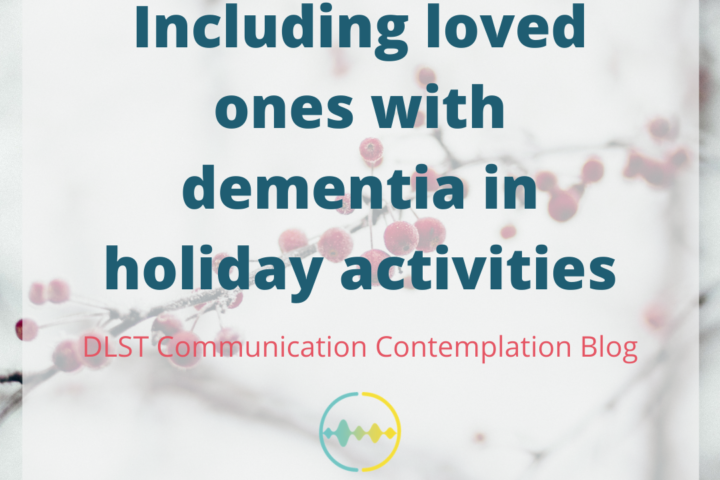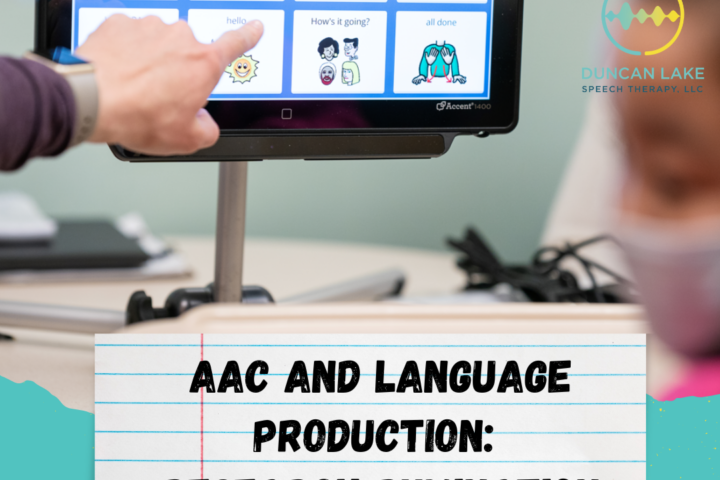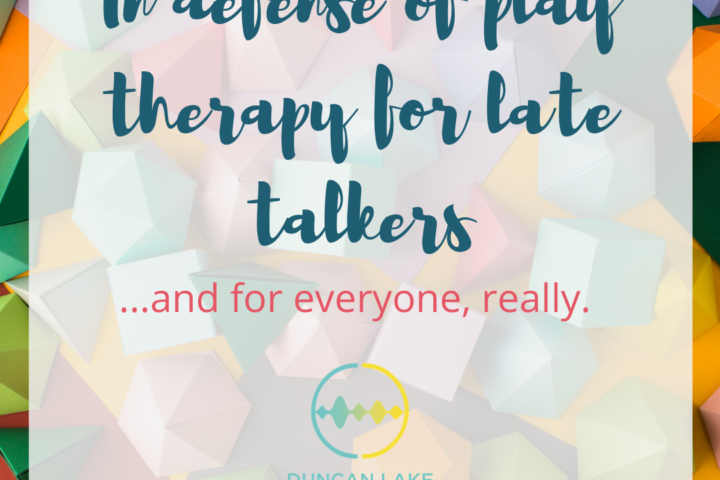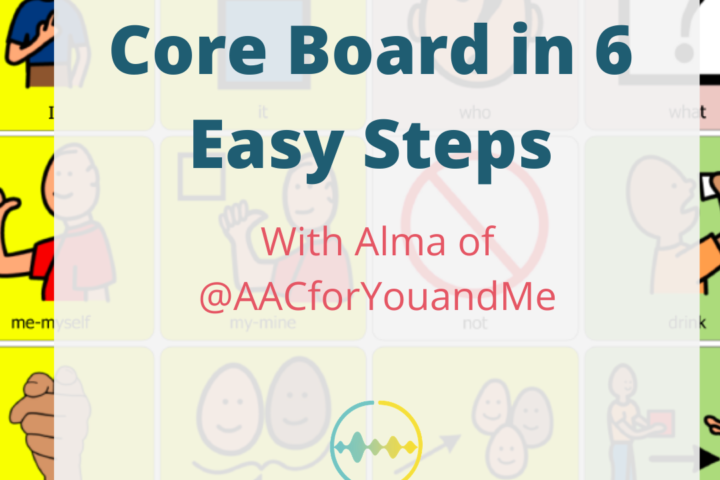This time of year, SLPs are often asked about which toys are the best for language development. The magic secret (or the ultimate disappointment?) is that no such toy actually exists. In fact, the language development doesn’t even come from the toy. It comes from the interaction the child has with their playmates! As a result, any toy can become one that can be used to enrich speaking skills when certain strategies are used. While this list is not comprehensive by any means, here are a few ideas you can use during play to give your kiddos a language boost.
Tag: speech language pathology
Including loved ones with dementia in holiday activities
Research tells us that, when given meaningful activities in which they can participate, individuals with dementia are more cognitively stimulated. Meaningful activities also help to alleviate anxiety and depression, and promote positive social interactions. All of these factors lead to an improved quality of life for the individual with dementia and, as a result, their caregivers.
Thanksgiving Language Fun
Thanksgiving brings with it a lot of time for family togetherness, food, and of course, opportunities of learning language! Looking for ways to incorporate some language-enriching activities into your holiday? Look no further!
Concussions are actually a big deal.
Who remembers this scene from what may arguably be one of the best teen movies of the late 90s? Julia Stiles (Kat) slams her head on a light fixture at a party and sustains what Heath Ledger (Patrick) determines is a concussion. Humor ensues.
This is a pretty common portrayal of concussions. While some of it might be true (funny things people say, etc.), what is not discussed nearly enough is the fact that concussions are actually BRAIN INJURIES. REAL BRAIN INJURIES.
AAC and Language Production: Research Rumination
When it comes to AAC, many, MANY myths exist (as we found out this week on the Facebook page). By far, the one I hear the most often is that AAC will become a crutch and the person using the AAC system will become reliant on the system and not talk.
This week, I read an article titled “Communication interventions for minimally verbal children with Autism: Sequential multiple assignment randomized trial” by Kasari, Kaiser, Goods, Nietfeld, Mathy, Landa, Murphy, & Almirall (2014). This team decided to investigate what, if any, affect AAC had on a non-verbal kiddo’s language production.
Let’s break it down!
In defense of play therapy for late talkers (and for everyone, really)
When it comes to our younger kiddos (and often older ones, too), sitting at a table and skill-drilling them isn’t perhaps the best or most realistic idea. For our late talkers, speech-language therapy is almost always play-based. From the outside, play-based therapy literally looks like the speech-language pathologist just playing with the child. This often times shocks parents- how can you be making any therapeutic gains with a late talker if you’re not “doing” therapy!?
Rest easy, friends. Play lends itself extremely well to therapy for our littlest clients, and is the much-preferred model of therapy for this age for a number of reasons.
Core boards in 6 easy steps
Core boards are the perfect way to model language for students. They help teach pronouns, verbs, adjectives and can help with increasing mean length of utterance (MLU).
Vocal hygiene tips from your friendly, neighborhood SLP (UPDATED JANUARY 2021)
These strategies are helpful for anyone who uses their voice regularly at work or is currently working on voice training (trans folks, singers, individuals recovering from phonotrauma). I’ll attach them to the next blog post as well.
Take care of your voice!
Speech-language pathologist? So…what do you do?
For the past few weeks, I’ve been waffling on what topic to write my first blog post. I had lots of ideas (some forthcoming, don’t worry!). However, the other night, as we were getting ready for bed, I was talking to my husband about something speech-related. Somewhere in the conversation, I asked, “Do you know what I do…?”
He replied, “Yes, of course I do. You help kids speak better.”









